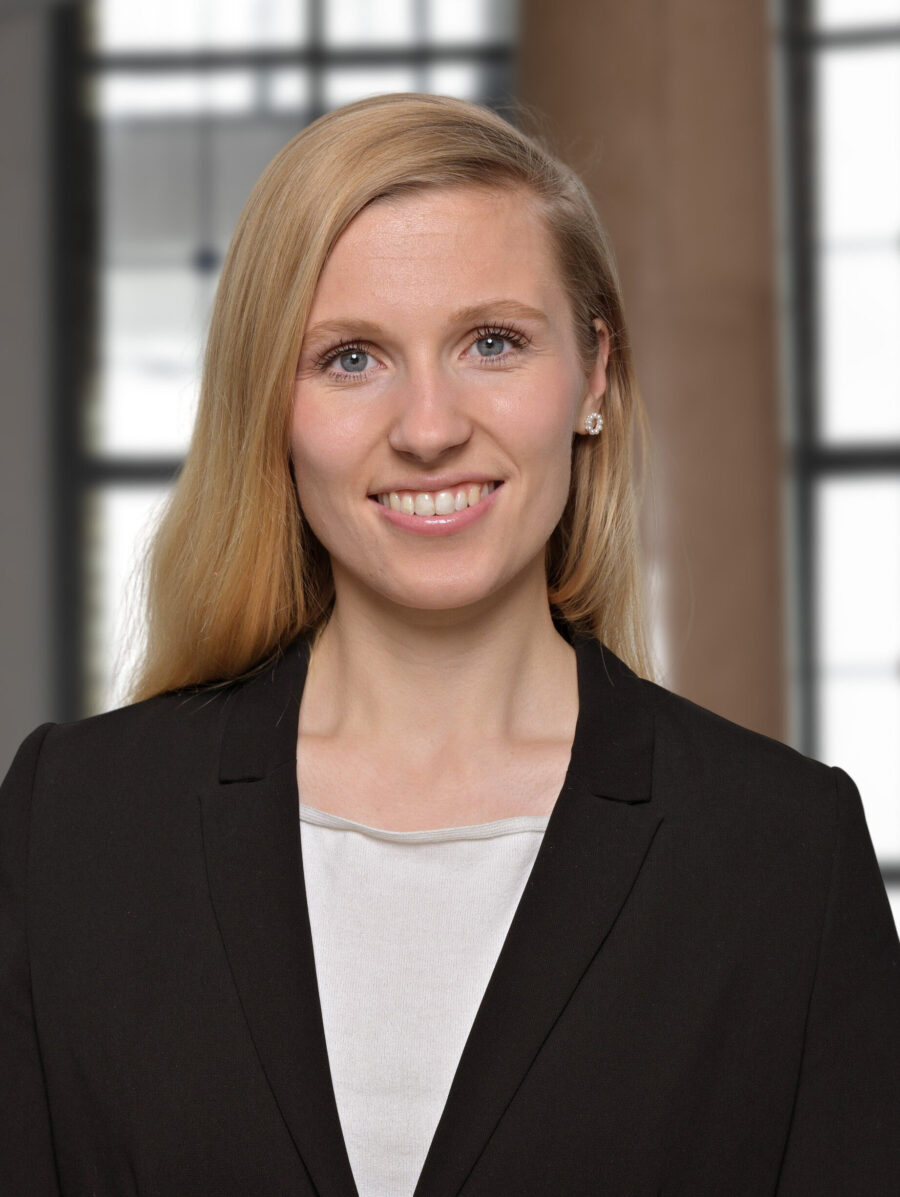The final decision to reform the debt brake on March 18, 2025 marks a paradigm shift in German fiscal policy. This step, often referred to as the "German Bazooka", raises hopes of an economic revival after years of stagflation in Germany. Our Senior Economist Dr. Felix Schmidt commented on March 21 that the fiscal package could result in growth "in the direction of 1.5 percent" if "clear reform commitments by the new government are reflected in the coalition agreement". The decision by German politicians has triggered historic price movements on the German stock markets in recent weeks and boosted shares with a supposedly strong exposure to Germany. The following sections examine: what does this development mean for SMEs? Who could be the real or secret beneficiaries of this new fiscal dynamic - and are the recent, sometimes extreme market movements in these shares really justified?
Market euphoria leads to a short-term revaluation of German Stocks
The effects of the political decisions have already been clearly felt at the stock markets in recent weeks. The DAX recorded new record highs up to the day of the final approval with an increase of almost 18% since the start of the year, while German second-line stocks also woke up from their slumber of the past three years and made significant gains. The SDAX has risen by 20% since the start of the year and the MDAX by 17%¹. German equities were therefore among the best performing stocks in the global investment universe. The euphoria on the German stock markets is based on the hope that increased government spending will boost the German economy, infrastructure and defence capabilities.
The adopted amendments to the Constitution provide that
- in future, expenditure for defence and certain security policy investments above a certain level will no longer be counted towards the debt rule of the Constitution.
- the establishment of a special fund of 500 billion euros "for additional investments in infrastructure and for additional investments to achieve climate neutrality by 2045".
- the loans taken out as part of the special fund are also exempt from the debt rule.
- the federal states should be given leeway in terms of debt when drawing up their budgets.
It should be emphasized that these price movements have so far been exclusively attributable to a revaluation of German equities. For example, shares with a high exposure to Germany have increased their P/E ratio from 14.9x at the beginning of the year to 18x. European construction and infrastructure stocks, which could benefit from the special fund, also showed similar valuation increases. Since the latest developments, the DAX has been trading at a P/E ratio of over 15x, well above the historical average of 13.5x and the European average of 14.4x (Figure 1).
Figure 1: German equities - development of the P/E ratio
Discrepancy between share price performance and fundamentals
The large variance in the re-rating of individual shares is particularly striking. This cannot always be reconciled with the exposure to Germany or with the fundamental effects of the special fund.
Figure 2: German infrastructure stocks - expansion of the P/E ratio and their geographical sales exposure (%)
One example of this is thyssenkrupp². The share price has risen by over 160% since the start of the year, which has pushed the P/E ratio to over 12x. This is the strongest increase in the German index universe since the start of the year (Fig. 2). While the company should benefit from increased demand in the defence and infrastructure sectors in the medium to long term, thyssenkrupp is also facing a huge restructuring and decarbonization era in the European steel segment. A cash outflow that has persisted for 14 years means that the company faces a significant financing gap in 2025/2026. In view of these challenges, the latest revaluation of this magnitude appears questionable - especially as there is no prospect of a fundamental improvement in earnings, nor is it clear when shareholders could benefit from better earnings trends across the Group through dividends, for example.
The picture is similar for Hochtief². As a German construction company in the areas of energy transition and sustainable infrastructure, Hochtief is often seen as a potential beneficiary of the special fund. Since the beginning of the year, the share price has risen by more than 40%. However, Hochtief only generates around 3% of its sales and profits in Germany. This raises the question of the extent to which the effects of the planned investments will actually influence Hochtief's future earnings performance. In addition, there is uncertainty as to when these investments will be reflected in the company's earnings - a decisive factor that has so far hardly been reflected in the current valuation expansion. In our opinion, the negative effect of higher long-term interest rates on the construction sector must also be taken into account.
Figure 3: Potential beneficiaries of the special fund - A chronological classification
The most obvious beneficiary of the special fund is the defence sector. Shares such as Rheinmetall², Renk² and Hensoldt² have already more than doubled this year. If Germany and other European countries were to increase their defence spending to 3 to 3.5% of GDP over the next 5 to 10 years, this would correspond to additional defence spending of up to 985 billion euros. According to our estimates, company share prices are currently already pricing in a level of 3%, meaning that the market is already anticipating a large part of the significant future increases in earnings. Although order books that have been structurally filled for years provide a certain degree of certainty for companies' earnings growth, production capacities remain a limiting factor. According to our calculations, the companies mentioned will have to increase their production capacities and thus their headcount by 30-50% p.a. over the next few years in order to generate the expected sales growth, which entails significant execution risks. In addition, it remains to be seen whether future defence budgets will continue to focus heavily on "traditional" products, as in the past, or whether the changed geopolitical situation will lead to a strategic shift in the allocation of funds.
Still many uncertainties regarding the composition and distribution of the infrastructure package
By adopting the infrastructure package, the German government has created significant financial leeway for future investments. Experts expect that this, together with the increased spending on armaments, will have a positive effect of 0.4-0.6% on German economic growth in the coming years. However, the exact allocation of funds to individual areas will probably only become clearer once the new government is in place and the relevant ministries have been appointed. In addition, it will take some time after the relevant tenders have been drawn up before these investments are reflected in companies' order books.
We are somewhat more optimistic with regard to the share of the infrastructure package that will be made available to the federal states and municipalities, as these funds could have a faster positive impact on companies as part of maintenance measures. In the following, we therefore take a closer look at individual stocks that could benefit from infrastructure spending either directly or through multiplier effects.
Tailwind for the digitalization of IT infrastructure and software
Secunet² could experience positive effects from the special fund due to its business positioning. The German federal government and its ministries are by far Secunet's largest customer base, as the company currently generates around 90% of its sales in the public sector (and particularly in the German armed forces and the Ministry of Defence).
Secunet focuses on cyber security and highly secure IT solutions "Made in Germany" - an area that is becoming increasingly relevant in light of the current geopolitical environment and the growing importance of cyber security and data sovereignty. In recent years, the uncertainty surrounding the distribution of the federal budget has been a major stumbling block for Secunet's business. However, with the change of government following the recent federal elections and the rapid announcement of the massive spending program, the company could receive new orders.
The Bechtle² share has risen by 30% since the start of the year. Germany's leading IT system house has a high revenue exposure to the public sector (approx. 30-35% of revenue) as well as to German SMEs, which have recently scaled back their investments in IT hardware due to increased uncertainty. The increasing demand for the digitalization of IT infrastructure in both the public sector and private industry offers considerable potential for structural tailwinds. However, the company remains cautious with its guidance for 2025 and does not expect a noticeable improvement in the order situation until the fourth quarter, which will be necessary to achieve the current guidance. The sales trend in the first half of the year remains difficult. The revival of the willingness to invest among SMEs and clarity about budgets in the public sector are the two levers that could then be reflected in a turning point for growth at Bechtle. The effects for 2025 appear limited, but in our view the municipal component of the infrastructure package and a brightening of sentiment in the SME sector could provide the company with a tailwind.
Direct effects in the infrastructure probably only in the medium term due to the limited speed of implementation
Knorr-Bremse², market leader for braking systems in the rail and commercial vehicle industry, should benefit from rising infrastructure spending in the long term. However, investment cycles in the public sector are lengthy: analysts assume that a large part of the special fund will only be fully utilized after around 12 years. The reasons for the lengthy processes are complex. On average, it takes around 20 years from the start of planning to the commissioning of new and expansion projects on the railways - and the majority of this time is spent on planning and approval procedures. The planning approval process, which most infrastructure projects have to go through before construction can begin, is particularly time-consuming. In federal highway construction, for example, around 85% of the total duration of 8 to 11 years is accounted for by the planning process, while only around 15% is accounted for by the construction phase - in which the companies are involved.
In view of these long implementation times, short-term effects for companies such as Knorr-Bremse are limited. The company itself does not expect any positive effects from the adopted programs in 2025, and the effects are likely to remain trivial in 2026. A similar picture is currently emerging for other industrial companies such as Siemens². In the medium term, however, it may be possible to derive tangible benefits from the planned investments - provided that the projects are implemented swiftly and without major delays.
Figure 4: Regulatory process in federal highway construction
Multiplier effects in industry and chemicals are difficult to calculate
Jungheinrich² is a leading manufacturer of forklift trucks and is characterized by a high proportion of sales generated by potential beneficiaries of the infrastructure package. Although the direct effect is limited, Jungheinrich is seen by market participants as a potential beneficiary due to an improving economic environment. The chemical sector, with companies such as Lanxess², is also one of the indirect beneficiaries due to an improving macroeconomic picture after years of weak demand and high energy prices. However, it is currently difficult to predict the extent and timing of these indirect effects.
Conclusion: Game changer for German small caps - selective approach required to avoid disappointment
The fiscal packages adopted can rightly be described as game changers for the German economy. Germany is using its greater financial leeway compared to other European countries to make targeted investments in future growth potential. This should significantly accelerate economic growth in the medium term and help to finally shed the nimbus of the "sick man" of Europe.
However, despite this positive impetus, there are still considerable uncertainties, as outlined above. In particular, the timing and sectoral distribution of funds - especially in the area of infrastructure - is still unclear. Many shares have already undergone a revaluation, which has given the companies considerable advance praise. However, these price gains must be underpinned by improvements in operating results in the future.
For investors, this means that a differentiated view is required, as not every price rally reflects sustainable profit potential. Second-round effects in particular are difficult to predict and harbor the potential for disappointment. Nevertheless, the fiscal initiative sends an important signal to break the recent negative sentiment towards German equities and attract foreign investors back to German secondaries. After three years of underperformance, the knot for German small and mid-caps could finally have burst and the foundation for a return to historical valuation levels has been laid.
Authors

Andreas Strobl
Andreas Strobl has been a Portfolio Manager at Berenberg since November 2016. He began his professional career in 2002 as a Sell-Side Analyst at BayernLB in Munich. In 2006, he moved to Allianz SE (Aequitas GmbH) as a senior Investment Manager. Since 2015, Andreas Strobl has worked as a Senior Portfolio manager at Allianz Global Investors in Frankfurt, where he was responsible for the management and development of various European Small/Mid-Cap equity portfolios. He studied business administration at the LMU in Munich. In 2005, he graduated at the top of his class as a CIIA (Certified International Investment Analyst) and CEFA (Certified European Financial Analyst).

Johanna Beeck
Johanna Beeck has been a portfolio manager at Berenberg since January 2023. She started her career in the Berenberg International Graduate Program with assignments in Asset and Wealth Management. Johanna Beeck holds a Bachelor of Science in Economics from Leuphana University Lüneburg.



